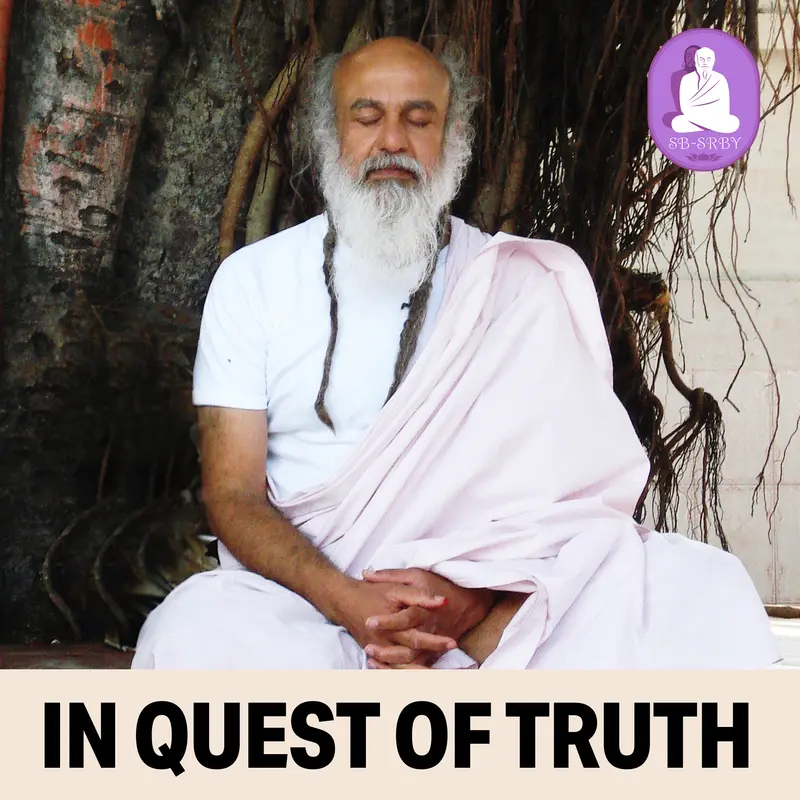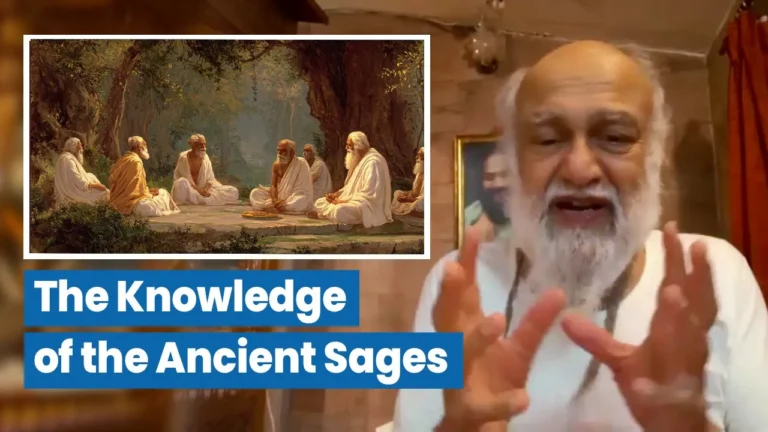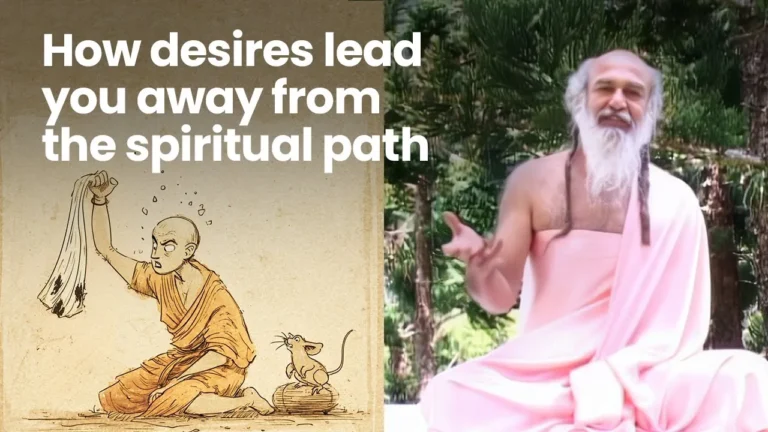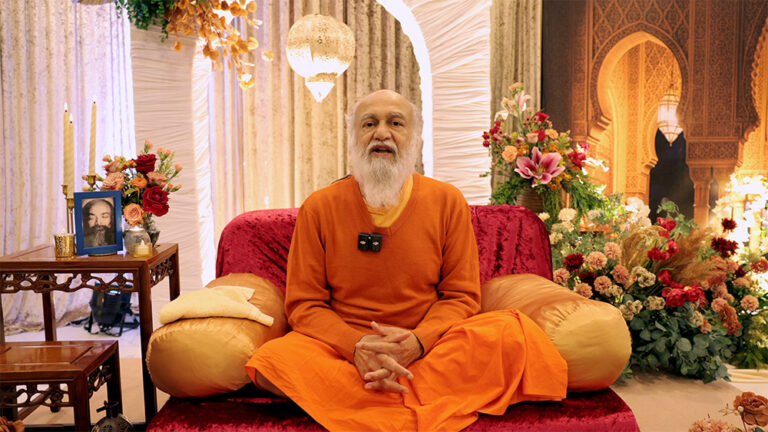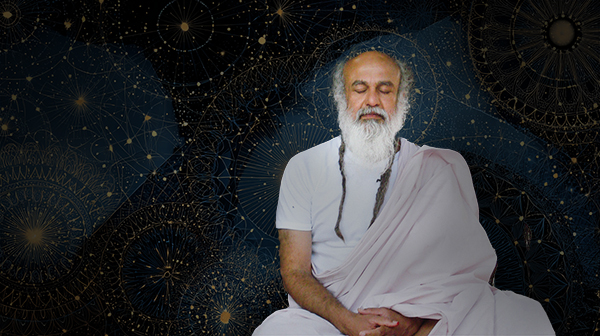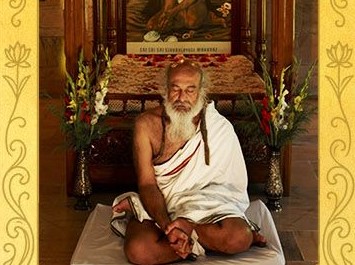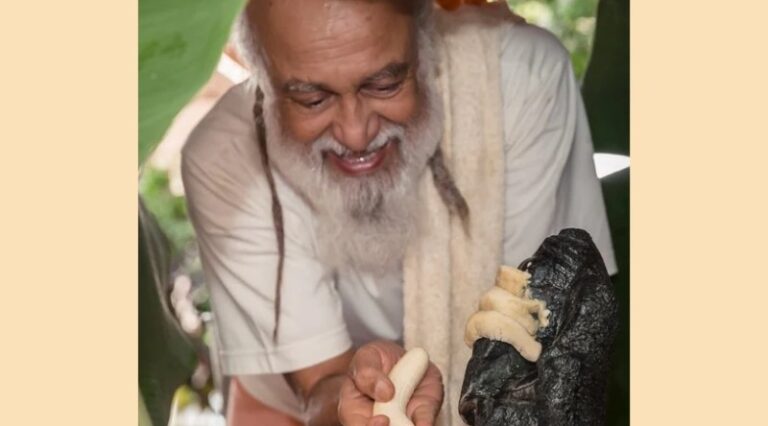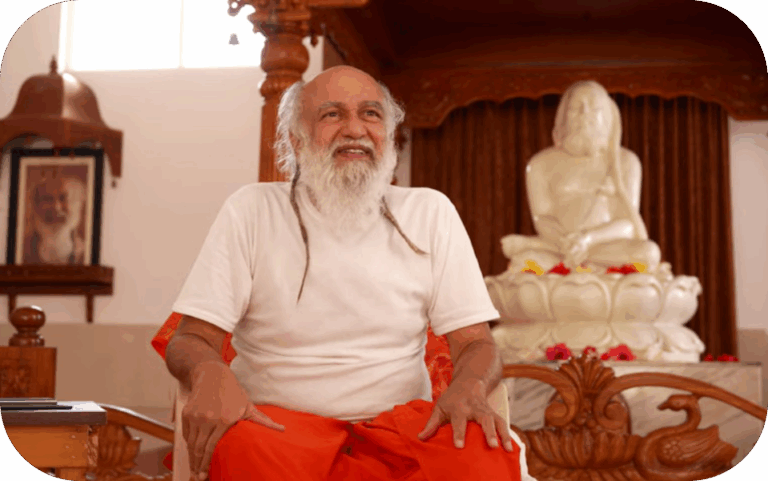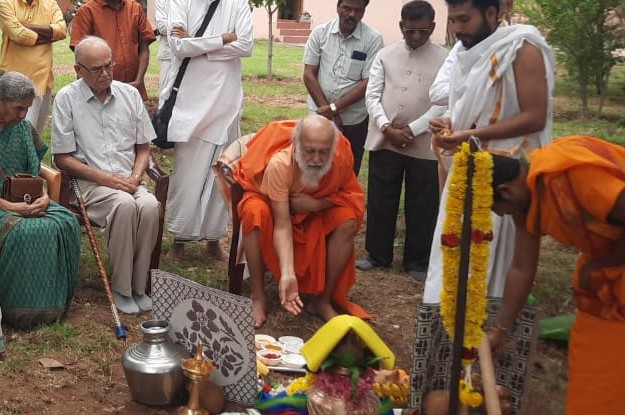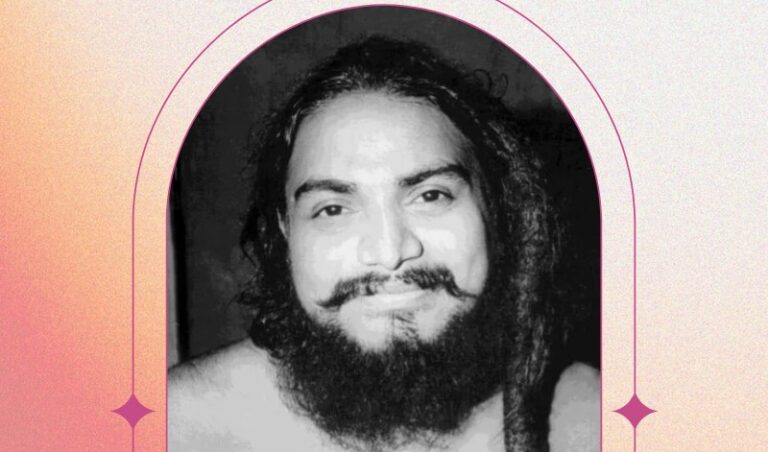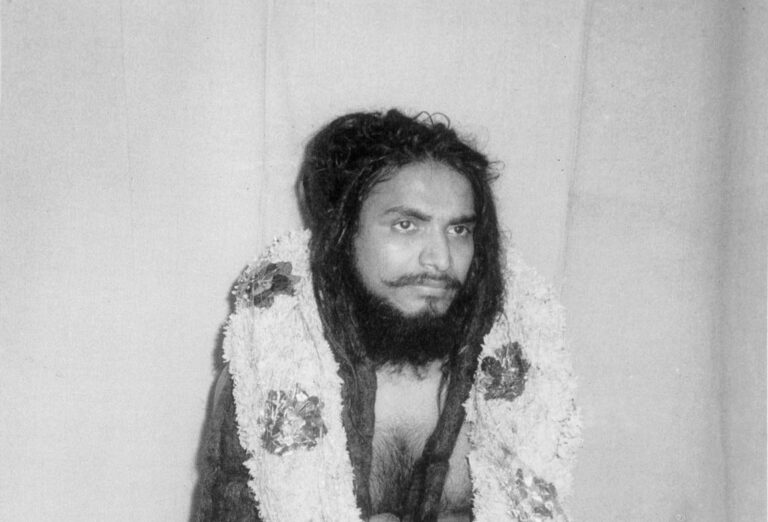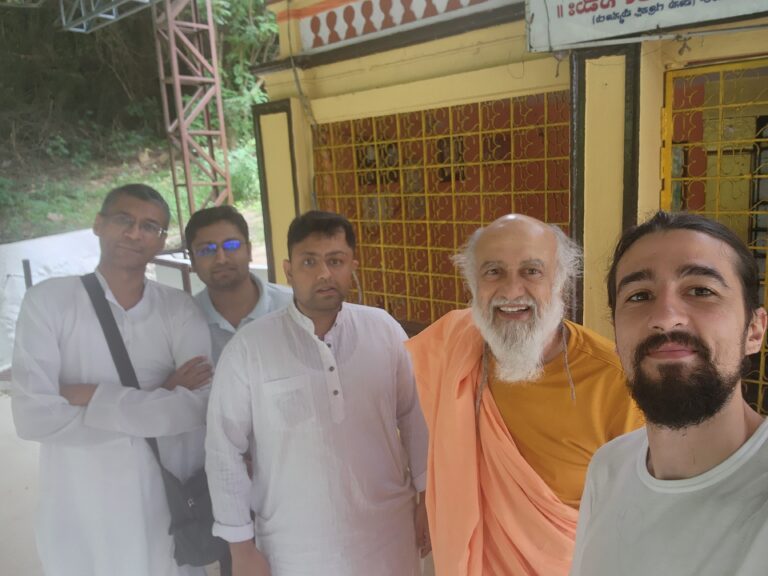His Childhood

Shri Shivarudra Balayogi was born ‘Srinivasa Dikshitar’ to a pious Brahmin family living in the town of Kolar in the south of India in 1954 and affectionately called ‘Seenu‘. A beautiful baby, He was the youngest of the family’s children and so was naturally cosseted by all.
His parents, Shankara and Sharada Dikshitar, raised their small brood of four children with great care and attention, with the aim to bring out their innate strength of character and develop their ability to live in a morally upright manner and overcome life’s inevitable challenges.
His father, Shankara, had grown up in difficult circumstances following the death of his parents while still a young boy, but through hard work and perseverance had overcome this enormous challenge and graduated as a medical doctor with the aim of serving humanity. He worked long hours in the service of his patients and would charge no fee if their financial circumstances were difficult. This formed the basis of His spirituality – the devout service of God through serving humanity.
Sharada had grown up in a pious family and closely followed the traditional Indian practices of worship and service to the community. She instilled a devotional attitude in the children, strengthened by an astute intellect. Thus Seenu grew through His childhood in an atmosphere of devotion to God and dedicated service to humanity.
Though growing up thus in comfortable surroundings, He found however that He experienced a peculiar pain of not belonging, a strong sense of alienation from this world – a feeling that in being in this world He had been transported into a strange new dimension which was not His true home.
At the age of seven, He chanced one day to hear His sister singing the famous devotional song of Adi Shankaracharya, ‘Bhaja Govindam’. The song speaks of the futility of worldly aspirations and exhorts one “to adopt the Divine Consciousness into your mind because when this physical body gives way, none of your worldly scholarship, wealth or power will come to your aid”. The words struck a chord in Him and He began to ponder their meaning. He began to consider who He truly was:
“Did my existence commence with the birth of this physical body? If so, what will happen when this physical body eventually dies? If I am the Immortal Self as declared in the scriptures, then why is it that I am not aware of it?”
Shiva Rudra Balayogi (Babaji)
Seeking answers to these questions He read the teachings of the great spiritual Masters of India but still found that this only provided an intellectual answer – the knowledge was not a living experience for Him. Thus searching to experience the Truth as a conscious experience He would spend many long hours during His teenage years in solitude in the caves of the sacred Chamundi Hills near His home in contemplation. Slowly the desire grew that He might find a God Realized Master as a Guru to guide Him to the Highest Truth. He waited, performing His spiritual practices and praying to the Divine to provide such a Guru.
His Guru
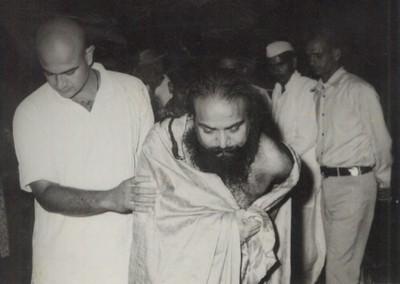
At the age of sixteen He was sitting in deep contemplation one evening in the Hanuman temple opposite His home, when He suddenly heard a voice whisper in His ears, “Shivabalayogi is your Guru. He will guide you to cross this ocean of worldly illusion.” Opening His eyes to see who had spoken, He was amazed to find no one nearby. For the next few days He went on enquiring about ‘Shivabalayogi’ from all the people He met in the temple, but could find no clues as to what the experience had meant. A few days later He was walking through the Mysore town centre when He abruptly heard the voice again, “Go to the Raghavendraswami temple. There you will know about your Guru.” Looking around, He was again unable to see anyone that could have spoken to Him.
Proceeding as the voice had directed Him, He went to the temple where one of Swamiji’s devotees introduced himself and gave Him a book on Swamiji’s life. Two days later the great Yogi came to Mysore on one of His tours and Seenu went for His Darshan (1). On the night before meeting His Guru, Swamiji initiated Him in a dream-vision into a mantra dedicated to Shri Shivabalayogi. Taking Swamiji’s Darshan the next day, Seenu fell in love with His Guru at first sight, and wanted to immediately leave home to join Shri Shivabalayogi’s Ashram, but was persuaded by His mother to wait three years to be sure His feelings were genuine. He was initiated into the technique of dhyana (2) meditation by His Guru and practiced this as the centre of His sadhana (spiritual exercises) while waiting for this time to pass. Continuing His studies at Mysore College, it was finally at the age of 19 that Srinivasa was accepted into Swamiji’s service and was sent to manage Swamiji’s Ashram in Dehradun, at the foothills of the Himalayas.
Years of Service and Devotion
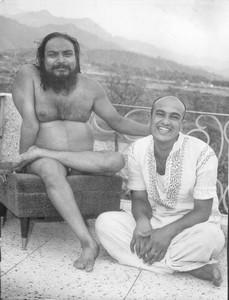
Joining Swamiji’s Ashram, Srinivasa extended His practice of dhyana and devoted Himself to the selfless service of His Guru’s Mission. Swamiji became His Guru, God, mother and father – indeed His All. As well as the daily management of the Ashram and serving the inmates and visitors, He also took on the care of two mentally-challenged boys who Swamiji sent to be looked after in the Ashram.
Swamiji was loving like an affectionate mother, but also strict like a stern father, and took enormous care in training His disciple. When Seenu was 24 years old, on one expedition to the holy river Ganga (Ganges) Shri Shivabalayogi initiated Him into the holy order of sannyas (monkhood).
“From now remember you are a sannyasi (monk). You must live a simple life so that people themselves can call you a monk, but you yourself should not become egotistic by claiming or boasting of any status as such.”
Shri Shivabalayogi (Swamiji) speaking to Seenu
His devotion to His Guru was complete and faultless. Speaking one day to a group of devotees about faith and service, Swamiji looked over at Seenu standing nearby and declared, “Look at the faith and attachment Seenu has. Even if I cut him into pieces and throw him in the river, he will get joined back together and come back to me.”
While performing prolonged meditation whenever circumstances allowed, He also carried out the management of the Ashram and looking after the mentally-challenged boys who Swamiji had sent for His care as His sadhana (3). Though a monk, Swamiji also gave Him tasks to carry out such as temporary guardianship of the children of local devotees. While this was unusual work for a monk, Seenu always carried out such tasks enthusiastically, simply considering it as service to the Guru. Looking back at those times, He recalled,
“One day when I was bathing Him, Swamiji suddenly asked, ‘Hey, do you think that you came to the Ashram to do meditation but instead you have a lot of odd jobs in this Ashram life? Do not consider that you are being given odd jobs to do. Have faith in the name of Guru. With total devotion consider everything as a service to the Guru and His Mission. Then every karma (action) of yours will get converted into sadhana.’
“At one public Darshan session a person once complained to Swamiji about having lost peace of mind and Swamiji asked him, ‘Do you do some sadhana?’ As Swamiji spoke mainly in Telugu I needed to translate what He had said into Hindi for the man and I translated it as, ‘Are you practicing any meditation?’
“Swamiji pulled me up and corrected me, ‘When I said ‘sadhana’ why are you using the word meditation? Meditation means a person will be sitting and closing the eyes. But sadhana can happen during dhyana (meditation), through bhakti (devotion), through seva (service) and in so many ways when one is able to surrender to the Guru. If you surrender to the Guru, automatically the mind will get controlled.’
“So thus Swamiji always emphasized ‘Do sadhana. Do sadhana.’ Through this one word sadhana, Swamiji beautifully conveyed the essence of the whole message that the Bhagavad Gita contains.”
For twenty years Seenu continued thus engaged in selfless service and devotion to His Guru and Swamiji’s Mission, coupled with deep spiritual practice.
In 1994, Swamiji took Mahasamadhi (dropped His physical body). Seenu attended the entombment ceremony and came away in grief. Returning to His boyhood home in Mysore, He walked out to the Chamundi Hills where He had performed sadhana in His teenage years. Sitting into dhyana, He fell into a deep meditative state for some days, finally aroused by a sound nearby. Turning to see the source of the noise, He beheld the dazzling figure of His Guru, surrounded by a glowing light.
Swamiji spoke to Him, instructing that the time was approaching when He would be initiated into Tapas, the austere form of prolonged deep meditation which Swamiji Himself had performed for twelve years.
“Your time has come to do Tapas. Because of your twenty years of selfless service, you have the fruit of seven years of Tapas, so if you perform Tapas now for another five years, that will be enough.”
Seenu replied that He was unsure He would be able to perform such a severe austerity.
Directing Him further, His Guru spoke, “When the time is ripe you will have to sit and circumstances will also force you, because of your prarabdha (acquired impressions of the mind).”
Seenu continued in selfless service and devotion to His Guru and Swamiji’s Mission, coupled with deep spiritual practice.
Tapas
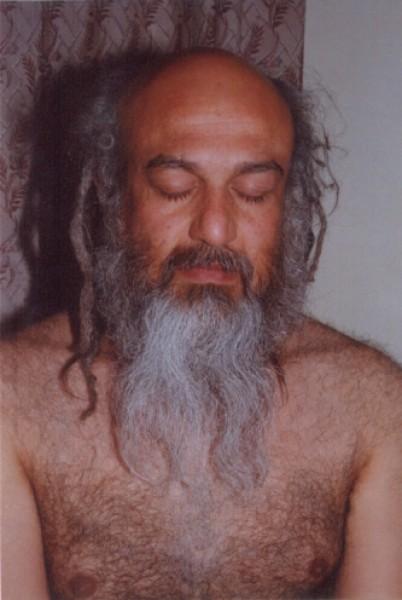
Unsure whether the experience had been a true Divine vision or a manifestation of His mind’s grief at the physical passing of His Guru, Seenu returned to the Dehradun Ashram and continued His service there. He felt that if it was truly a Divine vision then its import would become clear in time. Carrying on His work thus, it was later in that same year one evening as He was completeing the evening worship at the Ashram that He suddenly beheld again His Guru manifesting before Him. Swamiji touched Him between the eyebrows and led Him to a room adjacent to the meditation hall.
“Look, from this room either you come out as a Yogi (4), or your dead body should come out. Do not abandon the practice under any circumstance until you reach the goal. I want you to do this for five years as from your years of service you already have the fruits of seven years’ Tapas.”
Following His Guru’s directive, Seenu stayed in the room of the Ashram performing Tapas for the next 5 years. The process of Tapas is aimed at removing all acquired impressions of the mind by deep meditation. Shri Shivarudra Balayogi has described Tapas thus:
“If you try to hold the mind still, focused on one point for only a minute or two – for only a moment or two – you will find how difficult it is. However if you can focus the mind like this, single-pointedly focused on one point without any thoughts for one whole hour, then one is said to be meditating. If you can meditate like this for seven to eight hours at a stretch then one is said to be performing Tapas.”
Various difficulties occurred throughout this austere practice. Firstly the physical body was subject to a rigorous routine of forced immobility which lead to enormous pain in the body. Also the mind was being cleansed of its acquired impressions, but this combined with the increased concentration power of the mind meant that the mind’s power of illusion multiplied, leading to experiencing powerful visions and manifestations. Some were very tempting and some terrifically frightening, and all appeared as real as the world around us. With such visions appearing as real as the world around us, the strength of the Tapasvin’s (one performing Tapas) determination and detachment was tested to the maximum. His beloved Swamiji appeared in a manifested form each month to guide, inspire and encourage Him throughout the grueling sadhana. During one such sacred occasion in the fourth year of His Tapas, His Divine Guru blessed Him with a new name – ‘Shivarudra Balayogi’ – ‘Shiva’ signifying the state of complete stand-stillness of the mind, ‘Bala’ being one of Mother Parvati’s names, and ‘Yogi‘ denoting one who has attained Yoga – the permanent union of the mind with the Supreme Peace of Infinite Pure Consciousness – the Self.
Finally after nearly five years of confinement in the Ashram room, with His mind now cleansed of its acquired impressions and resting effortlessly in the immortal Self, He faced one final test.
On the day of Kartik Shuklapaksham in the Indian calendar, 16th November 1999 He was summoned from Samadhi by the wondrous manifestation of the deity Ardhanarishwara (5) – Lord Shiva and Mother Parvati in one form. As He prostrated in rapture They blessed Him,
“Now that We have come due to your Tapas, you do not require your Guru and can go ahead to get many followers.”
But this was the crucial final test to see if any remnant ego remained in any form – whether the total surrender of the mind into the immortal Self had occurred.
As no such worldly desire remained, the words sprang spontaneously from His heart,
” I want only the Lotus Feet of my Guru. I offer my life at the Lotus Feet of the Divine Guru who helped and guided me to this. So please, if You want to bless me, bless me that I can always remain at the Lotus Feet of my Guru and serve Him and work according to my Guru’s guidance.
It is the Guru’s Grace which is needed and nothing else. Whatever the Guru, my beloved Swamiji, wants I will do and there is no other desire.”
The Divine form smiled at this reply and with a blessing that the Guru’s Grace would descend, disappeared. As the form vanished, Shivarudra Balayogi witnessed His beloved Divine Guru Shri Shivabalayogi materializing in the same place where Ardhanarishwara had stood. Blessing His dear disciple, He instructed Him,
“After you come out of Tapas inspire the people of this world to practice dhyana and know their True Self. Through this practice they can achieve Total Peace.”
Thus with the mind completely settled in the Supreme Peace of the Infinite Self and permanently resting there effortlessly, His Tapas had reached its successful completion and the goal of all human existence.
The Mission Continues
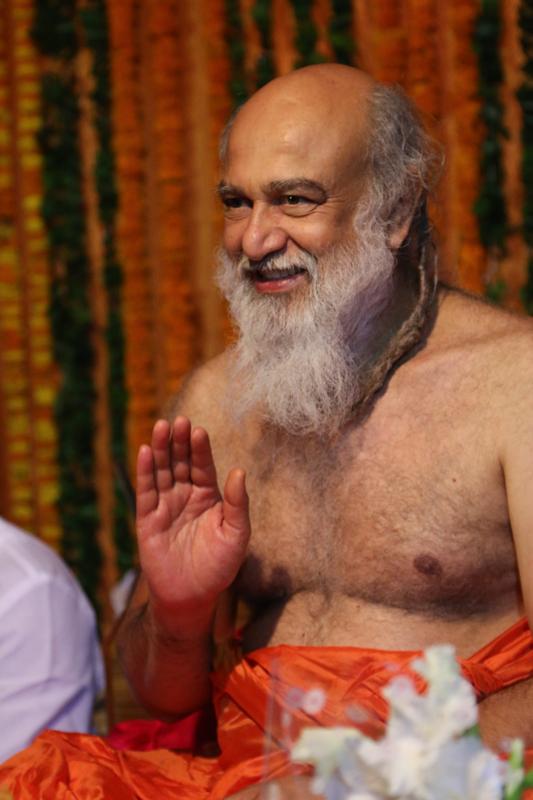
On 23rd November 1999, after five years in Tapas, Shri Shivarudra Balayogi Maharaj stepped forth to carry on His Guru’s mission. He now travels the world spreading the message and name of His beloved Guru Shri Shivabalayogi Maharaj. He describes the aim of all spiritual pursuits simply, but completely.
‘The mind has come out of the Divine Self. It is only ever searching for happiness and peace, but cannot permanently find these in the creation, as nothing in this creation is permanent. Only by returning to its true nature can the mind find permanent peace – in the Pure Consciousness of the Self. This can be achieved through meditation, devotion and selfless service.’
Shiva Rudra Balayogi (Babaji)
‘You have forgotten your real Self. You are that abode of Supreme Peace which you are seeking.’
1. Darshan is a precious spiritual exercise for the devotee’s eyes. At such special times of seeing a Yogi, the individual soul’s consciousness receives positive vibrations and absorbs subtle impressions, beneficial to the soul’s spiritual journey.
2. Dhyana – “One’s attention to” – The technique of meditation into which Shri Shivabalayogi was initiated and into which He subsequently initiated others.
3. Sadhana – The aspirant’s efforts to achieve Self Realization.
4. Yogi – One who has completed the path of Yoga such that the mind remains settled effortlessly in the Immortal Self.
5. Ardhanarishwara – The Divine manifesting as the combination of Supreme Consciousness ( Lord Shiva) and the Divine Energy ( Mother Paravati) which includes all its aspects. Though the Divine is beyond all manifested forms, depending n the sadhak’s resolution of the mind and cultural background, a vision (low potency) or physical manifestation (higher potency) can occur. This same form will lead one beyond to the Infinite Reality which is the ultimate aim of spirituality – Self Realization, God Realization.

